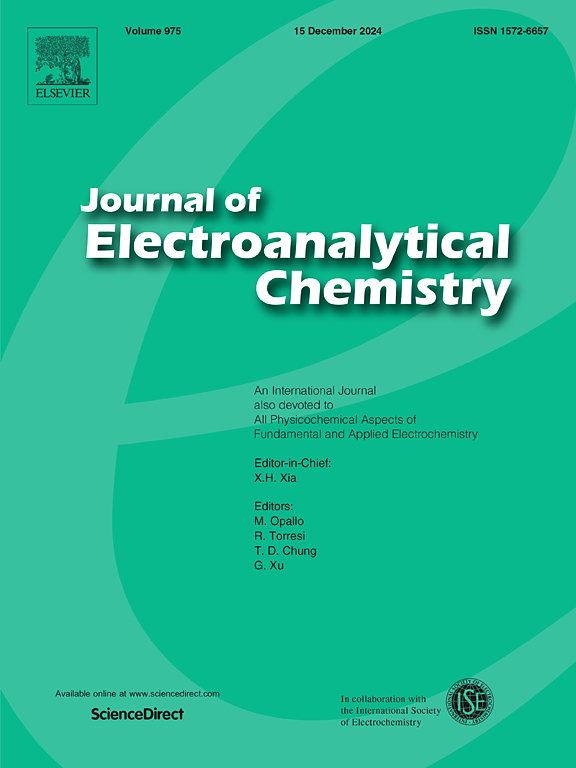单宁酸碳包覆改善o3型Na(NiFeMn)1/3O2阴极性能
IF 4.1
3区 化学
Q1 CHEMISTRY, ANALYTICAL
引用次数: 0
摘要
具有优良电化学性能的正极材料在钠离子电池的规模化发展中起着至关重要的作用。本文制备了直径为5 μm的o3型Na(NiFeMn)1/3O2微球,并用碳化单宁酸(CTA)涂层对其进行改性。碳包覆的Na(NiFeMn)1/ 3o2微球作为sib阴极具有明显改善的性能,在150 mA g−1下提供108.6 mAh g−1的初始容量,300次循环后容量保持率为73.5%。重要的是,在高温条件下(70°C),改性阴极的初始容量为101.1 mAh g−1,在300次循环后容量保持率为60.7%。这种表面涂层策略为在极端环境中开发耐用、高能的SIB阴极提供了可扩展的途径。本文章由计算机程序翻译,如有差异,请以英文原文为准。

Performance improvement of O3-type Na(NiFeMn)1/3O2 cathodes by tannic acid-derived carbon coating
Cathode materials with excellent electrochemical performance play a crucial role in the large-scale development of sodium-ion batteries (SIBs). In this work we prepared O3-type Na(NiFeMn)1/3O2 microspheres with a diameter of 5 μm and modified them with carbonized-tannic acid (CTA) coating. The carbon coated Na(NiFeMn)1/3O2 microspheres designed as cathodes for SIBs have evidently improved performance, delivering an initial capacity of 108.6 mAh g−1 at 150 mA g−1 and a capacity retention of 73.5 % after 300 cycles. Importantly, under elevated temperature conditions (70 °C), the initial capacity of the modified cathode is 101.1 mAh g−1, with a capacity retention of 60.7 % after 300 cycles. This surface coating strategy provides a scalable pathway for developing durable, high-energy cathodes toward practical SIB applications in extreme environments.
求助全文
通过发布文献求助,成功后即可免费获取论文全文。
去求助
来源期刊
CiteScore
7.80
自引率
6.70%
发文量
912
审稿时长
2.4 months
期刊介绍:
The Journal of Electroanalytical Chemistry is the foremost international journal devoted to the interdisciplinary subject of electrochemistry in all its aspects, theoretical as well as applied.
Electrochemistry is a wide ranging area that is in a state of continuous evolution. Rather than compiling a long list of topics covered by the Journal, the editors would like to draw particular attention to the key issues of novelty, topicality and quality. Papers should present new and interesting electrochemical science in a way that is accessible to the reader. The presentation and discussion should be at a level that is consistent with the international status of the Journal. Reports describing the application of well-established techniques to problems that are essentially technical will not be accepted. Similarly, papers that report observations but fail to provide adequate interpretation will be rejected by the Editors. Papers dealing with technical electrochemistry should be submitted to other specialist journals unless the authors can show that their work provides substantially new insights into electrochemical processes.

 求助内容:
求助内容: 应助结果提醒方式:
应助结果提醒方式:


